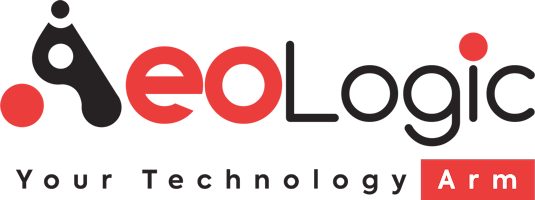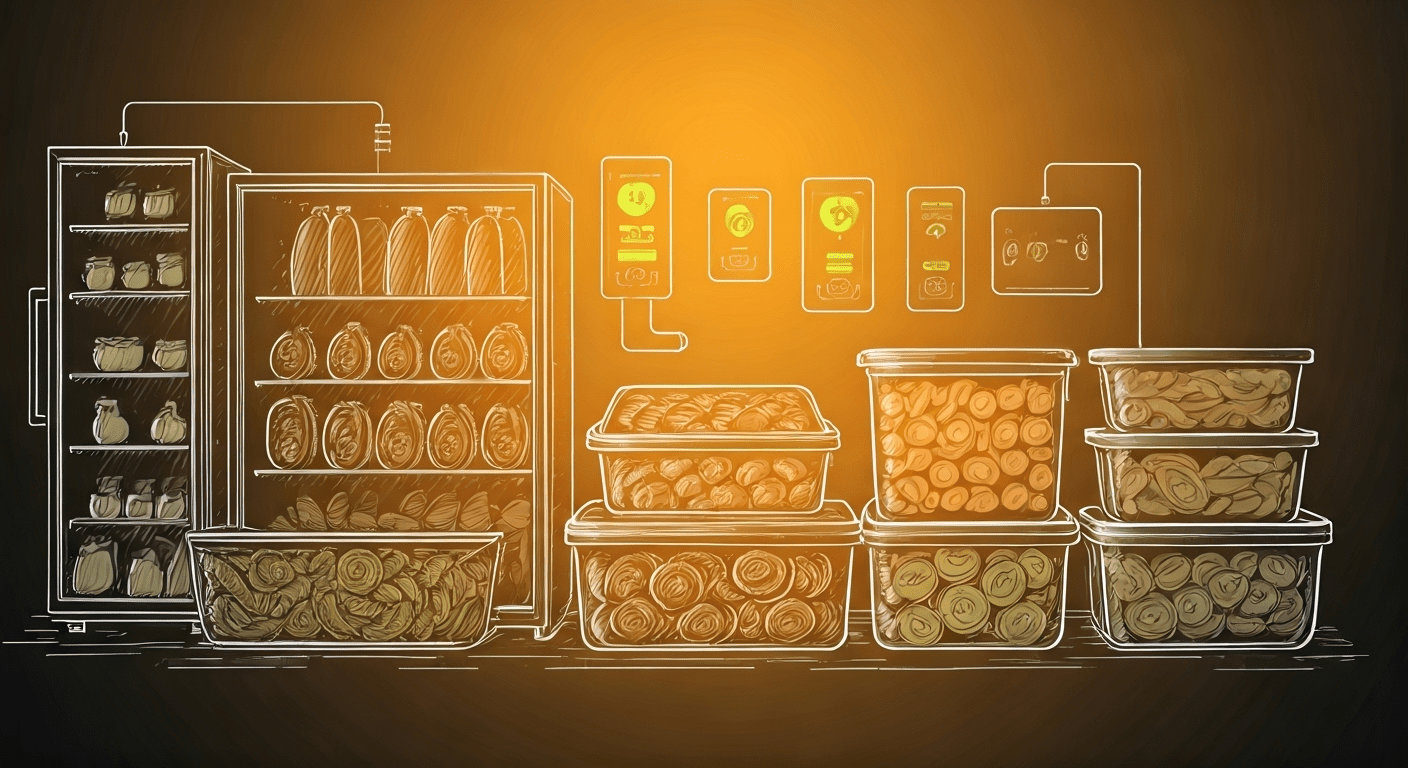Efficient cold chain management is key for keeping things like food and pharmaceuticals safe. These products must stay within certain temperature ranges. This helps to keep their quality and safety. The internet of things (IoT) has changed how cold chain monitoring works in the supply chain. With IoT, cold chain systems now use smart sensors and technology to track data in real time. This allows businesses to make sure their products are safe and good from start to finish. These cold chain monitoring solutions help stop spoilage. They also make it easier for companies to do their work.
Enhanced Real-Time Temperature Monitoring

Real-time systems for cold chain temperature monitoring have made things better for the cold chain industry. The systems help keep products safe at each step by watching over the cold chain temperature. People can also use them to follow rules and show that they care about safety. A monitoring device in the cold chain checks and collects information about the temperature, humidity, and other things in the air, like air quality. You get this information at once with iot technology, so you can act fast if there is an issue. This helps you make good choices to keep your goods safe and in good shape.
These tools can find even small changes from what is normal. This makes cold chain management work better. It does not matter if your goods are moving or they are in storage. IoT solutions will give you precise control of the cold chain. This helps you keep the best conditions at all times. It also cuts down the number of items lost to spoilage.
Continuous Tracking for Immediate Issue Detection
Continuous tracking systems with IoT sensors play a key role in checking cold chain temperature. These tools use automation to make sure they are always working. The sensors gather detailed data each day. They also send alerts right away if there is any issue with the cold chain temperature.
One big benefit is that data analytics platforms can help you a lot. They take in every reading the sensor gives and then show you simple steps you need to take. For example, if your refrigeration unit is not working, or if humidity inside the transport goes up, the system will send an alert. You can then fix the problem before it gets worse.
These up-to-date systems help you watch everything in real time. This means you can act fast if there is a problem. In cold chain logistics, these features are great to stop spoilage. They also help prevent missed or failed delivery. At the end of the day, this helps businesses meet what their customers want every time.
Reducing Spoilage and Maintaining Food Quality
Spoilage is a big problem for companies that work with biologics and food. Because these goods are so delicate, small changes in how they are kept can lead to a lot of waste. IoT systems help because they let you keep track of temperature fluctuations and humidity. This helps you know what is going on when goods are in storage or on the way somewhere else.
Real-time monitoring means you always get updates on temperature ranges. If the temperature or any other condition is not in the right range, the system sends alerts right away. This helps people find issues fast and keep product quality good. For example, they can move goods to a different storage spot or a cooler reefer to keep things safe.
There are also special tools to watch and control the inside of reefers. These tools help make sure each pallet stays in the right condition. When IoT is used to keep spoilage low, customers are more happy and there is less waste. This makes the supply chain better for everyone and helps make the process more sustainable. In this way, IoT systems are important for checking temperature and humidity in reefers, helping to keep products safe and lowering the risk of spoilage.
Improved Regulatory Compliance and Reporting
Regulatory bodies have strict rules for cold chain processes. They do this to be sure that food stays safe and to make sure medicine does what it is supposed to do. A company can use IoT systems to help them follow all these rules. These IoT systems store and organise detailed reports, so when there is a need to share them, it is easy to get the report and send it in.
Cold chain temperature monitoring devices help you watch over the cold chain temperature at every step. The data from these devices meets all the rules set by the FDA, USDA, and other groups. You will get more transparency in your supply chain and can prove that you follow all the rules. This makes any audits much easier and helps you keep your cold chain and supply chain honest and trustworthy.
Automated Data Logging for FDA and USDA Standards
To meet FDA and USDA rules for food and drug safety, you need to have the right collected data. Using automated logging systems makes this easier. They watch over temperature ranges and other important things. This helps you keep your work safe and ready for the next step.
| Regulatory Body | Compliance Focus | IoT Contribution |
| FDA | Temperature Control | Real-Time Alerts |
| USDA | Food Safety Standards | Automated Reporting |
These reports use the collected data and get stored online. This setup lets managers see all the important details fast when it is audit time. Cold chain IoT devices make work in daily logistics easier. They help the cold chain industry follow rules and do the job well.
This way of working helps people look at what is going on at each step. It cuts down on mistakes that come from using paper records. The cold chain industry gets stronger and works faster from this. This also saves time and helps make the work feel more trustworthy.
Streamlining Audit Processes with Digital Records
Audits can be tough to handle, mostly when the supply chain has a lot of problems each day. IoT cold chain solutions make this job easier. They use automation to help and keep all records digital.
These platforms collect temperature readings and track how things move in the supply chain. They also send real-time alerts. All this data goes into one database. Automation helps get rid of manual mistakes. This makes the work faster and helps you keep the rules made by regulatory bodies.
Also, auditors can see shipment details. They can check if the cold chain always kept the right temperature ranges. This helps get approval faster, which is good for logistics managers and others working in cold chain logistics.
Increased Supply Chain Transparency and Traceability

Traceability matters a lot in the supply chain now. It is even more needed for items that must stay at a set temperature. IoT solutions with GPS help you get good visibility. You can watch your items from their starting point to when they reach you.
You will get updates about where your items are and what shape they be in. This makes it easy for you to be right and react fast if any problem happens in the supply chain. When you can see what is going on, you can keep product quality safe. It also helps you build trust with people and groups that work with your business.
End-to-End Visibility from Farm to Table
IoT systems help people see what is happening in the cold chain from the farm to the table. These devices help you track every cold chain shipment at all stages. You can get important details about things like temperature during shipping or the state of the storage place for food. This way, you always have good visibility in your cold chain and shipping process.
GPS systems keep an eye on every pallet when it is being moved. They send you updates as the goods go out and when they get to their place. This helps hold food quality steady and lowers spoilage chances. This is really key when you have perishables and seasonal biologics.
When you have more visibility in the cold chain, you can handle surprises better. People who make decisions can step in fast. This helps things keep going well, even if there is a problem.
Fast Response to Temperature Excursions and Incidents
Temperature changes can hurt the supply chain very fast, so it is important to act right away. IoT systems send alerts when something goes wrong. These alerts help teams fix the problem as soon as they see it. A person can change the settings in the reefers or turn on backup machines if needed.
These tools play a big part in cold chain logistics. They help a lot when something goes wrong that you did not expect. When a sensor finds a humidity issue, the automated software tells you what steps you need to take right away. This makes sure you can fix any problems fast in your cold chain.
Good incident management in the cold chain means there is less time when things are not working. This is good for logistics. It helps make sure perishables get to the right place and keep their best quality.
Optimized Operational Efficiency and Cost Savings
IoT-based cold chain management helps make the way things work better in the supply chain. It lets you see problems early and take action before they get worse. This means you can stop delays or spoilage before they happen. When you do logistics well, you waste less of what you have. This is good because it helps cut costs and saves money for everyone in the cold chain.
Advanced features, like predictive maintenance, help you keep your fleet and equipment in good shape. This lowers the risk of any last-minute problems. You also save money because you avoid extra costs.
Predictive Maintenance of Cold Chain Equipment
Predictive maintenance helps people run their cold chain equipment better. The sensors in the machines always send data on how they are working. This helps you spot problems early and fix them before they turn into bigger issues. You can plan repairs at the right time, so there are no unexpected stops.
These devices use data analytics to guess what problems could come up next. This helps people fix things before they break down. Fixing things early can save a lot of money. For example, sensors spot small issues in refrigeration units. You can fix them on time with this, and not have bigger problems later.
If you take care of your equipment, your job will be easier. There will be less time when things are not working, and the cold chain industry will run much better. A well-kept cold chain helps everything move along smoothly.
Reducing Unnecessary Product Losses and Recalls
IoT makes work easier in the cold chain. The cold chain industry uses automation to lower product losses and recalls. With IoT, you can track and watch temperatures all the time. This helps reduce the risk of spoiled goods or damaged pharmaceuticals. The use of automation and iot makes the cold chain safer for everyone.
Data tracking platforms are used to keep important numbers. You can see all the details about the products in the cold chain. This helps you follow rules and deal with problems quickly. When you use the right tools, it is easier for a business to handle these issues with the cold chain.
Automation makes work go easier. The cold chain industry can keep things running with less stops or problems. This helps companies in the cold chain to make money, even if times get hard. Automation is good to keep work smooth and steady.
Definition and Basics of IoT Cold Chain Monitoring
Iot Cold chain monitoring helps to keep goods that need a certain temperature safe. The tools in a cold chain can watch things like temperature, humidity, and how the cargo moves. They do this with a high level of care and accuracy. This is important to make sure that, when you get your products, they are good to use and have not changed because of heat or other factors. If the cold chain is not watched right, people may not get the products in the way they should. Tracking temperature and humidity in the cold chain is now easier and better thanks to smart monitoring tools.
The monitoring devices have sensors that link to iot systems. They send updates right away. If something is not within the normal range, alerts are sent out fast. This helps keep food or medicine from going bad.
When people use cold chain monitoring, they help the business make sure their products stay safe and good while they are stored and moved. This way, the business can meet the rules for quality and safety. Using a cold chain is important to keep products at the right temperature, so customers get the best.
Conclusion
To sum up, cold chain IoT solutions are changing the way we keep food safe. These tools give businesses real-time updates and help them follow the right rules. They also make the supply chain more clear and help it work better. By using such IoT solutions, there will be less spoilage and you will have fewer unwanted product losses. You can meet the FDA and USDA rules when you use these solutions. If something goes wrong with the temperature, you can act fast and fix it.
Keeping the cold chain safe is an important part of your supply chain. It helps bring good and safe food to people. If you want your food safety to be better, you can have a free talk with our experts. Learn how iot solutions can work in your supply chain and help cut down on spoilage.
Frequently Asked Questions
How do Cold Chain IoT solutions improve food safety?
IoT solutions are used to help keep food safe. They work by watching the temperature and sending alerts right away if something changes. The sensors in the IoT systems can spot any change in temperature as soon as it happens. This means people can take quick action to keep the products in good condition. IoT solutions help the supply chain run better. This way, people can make sure products get to customers while they are still in the best shape.
What features should I look for in an cold chain IoT system?
Key features to watch for in cold chain logistics are monitoring devices. These use sensors to check the temperature and humidity inside the logistics system. You will also get GPS for better tracking of the goods as they move. Automation tools help send real-time alerts if there is a problem with the cold chain or if the temperature gets too high or low. With data analytics platforms, you can look at all the collected data from the system and know what is happening at any point. All of these things work together to make cold chain logistics more safe, strong, and reliable for people and companies who use them.
Are cold chain IoT solutions cost-effective for small businesses?
Yes, IoT cold chain solutions can help a business run better and save money. The automation in these tools helps lower costs that often come from spoilage. When processes are smoother, it is easier to cut down on waste, too. A small business can use cold chain management tools that are scalable and fit what they need. This helps them get good results.
How is data security managed in IoT cold chain monitoring?
IoT cold chain tools use strong encryption like AES-256 and AES-128 to keep the collected data safe. These systems work to protect how things are stored and sent. This gives strong security for cold chain monitoring. You get a way to be sure the data is right and does not get changed.
Can Cold chain IoT Solution technology help during food recalls?
Yes, IoT cold chain systems do help the supply chain to track products with ease. This can also make it faster to recall items if there is any issue with the temperature. By using data analytics, it is easy to see when something goes wrong. This helps to lower loss as well. When you use these tools, you also make sure the rules are being followed. This keeps people safe in the supply chain.
Cold chain logistics are very important for moving items that need to stay cold, like pharmaceuticals, fresh foods, and vaccines. Keeping the cold chain in good shape helps protect the quality and safety of these products. From the time they are made until people use them, the correct temperature must be kept. This makes sure the products do what they are made to do and reach people in good shape. Cold chain and logistics work together to do this job well for everyone who needs these items.
One big challenge in cold chain logistics is keeping the same temperature at every step of the supply chain. If the temperature goes up or down, the products can spoil. Spoilage makes them not work the way they should or not safe to use or eat. So, people have to watch and control the temperature all the time during storage, handling, and transport. Cold chain logistics needs this care to stop product spoilage.
Another challenge is making sure the handling and packaging process protects fragile products while they are sent out. You need the right packaging and good insulation. These things help stop damage from temperature fluctuations, harm from rough handling, and getting any dirt or germs on the products.
Transportation brings some challenges in cold chain logistics. Things like late shipments, not having the right cooling tools, or bad planning of routes can put temperature-sensitive items at risk. That is why it is important to work with trusted transport companies who know about the cold chain. They must follow the proper steps to keep products at the right temperature. You want to be sure your logistics run smoothly and that what you send will stay safe.
Also, following the rules set by different places makes cold chain logistics even more tricky. Rules for storing and moving temperature-sensitive products are not the same everywhere. You need to keep careful records and stick to guidelines in each region. This is important in cold chain logistics to make sure you follow the rules and do not get hit with fines that can cost a lot.
New ideas in technology, like real-time monitoring systems and IoT-enabled tracking devices, now help handle some of the problems found in the cold chain. These tools help you see the state of products as they move through each step in the supply chain. When you put money into these changes, you can make things work better, lower the risks, and keep the cold chain logistics safe and sound. This better visibility in logistics helps the cold chain run smoother and be more trustworthy.







